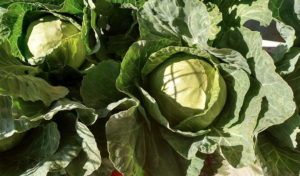Growing Cool Season Vegetables
go.ncsu.edu/readext?590321
en Español / em Português
El inglés es el idioma de control de esta página. En la medida en que haya algún conflicto entre la traducción al inglés y la traducción, el inglés prevalece.
Al hacer clic en el enlace de traducción se activa un servicio de traducción gratuito para convertir la página al español. Al igual que con cualquier traducción por Internet, la conversión no es sensible al contexto y puede que no traduzca el texto en su significado original. NC State Extension no garantiza la exactitud del texto traducido. Por favor, tenga en cuenta que algunas aplicaciones y/o servicios pueden no funcionar como se espera cuando se traducen.
Português
Inglês é o idioma de controle desta página. Na medida que haja algum conflito entre o texto original em Inglês e a tradução, o Inglês prevalece.
Ao clicar no link de tradução, um serviço gratuito de tradução será ativado para converter a página para o Português. Como em qualquer tradução pela internet, a conversão não é sensivel ao contexto e pode não ocorrer a tradução para o significado orginal. O serviço de Extensão da Carolina do Norte (NC State Extension) não garante a exatidão do texto traduzido. Por favor, observe que algumas funções ou serviços podem não funcionar como esperado após a tradução.
English
English is the controlling language of this page. To the extent there is any conflict between the English text and the translation, English controls.
Clicking on the translation link activates a free translation service to convert the page to Spanish. As with any Internet translation, the conversion is not context-sensitive and may not translate the text to its original meaning. NC State Extension does not guarantee the accuracy of the translated text. Please note that some applications and/or services may not function as expected when translated.
Collapse ▲
Now that daylight savings time has begun, we have more daylight at the end of the day and many folks are eager to get into their gardens. I have been thinking about planting peas and maybe some Chinese cabbage in my own garden. If you are like me, you may have water standing on top of the soil or the soil is saturated from all the rain we have had. You should stay out of the garden until the soil has dried. Working the soil when it is wet can cause compaction and destroy the soil structure.
If your garden is too wet, while you are waiting for it to dry, spend time planning your garden if you haven’t already. Decide where you will plant each crop and sketch it out so you have it for future reference. A detail of where you plant this year will help in future years for planning crop rotations within your garden.
If you have not tested your soil in the past couple of years, you should test it so that you know what your baseline is for nutrient and pH levels. You can pick up a soil test kit at the N.C. Cooperative Extension of Union County office or at any Union County Library. Testing does cost $4 per sample from Thanksgiving until March 31. April 1 – Thanksgiving the testing is free. You mail your sample to the Soil Testing lab in Raleigh, so you will have the expense of postage.
Cool season vegetables can be planted when the soil temperature warms to 35-40°. You can purchase a good soil thermometer at most garden centers or online for $10 – $20. Commonly planted cool- season crops include cabbage, broccoli, onions, peas, radishes, lettuce, spinach, kale, and turnips. Cabbage, broccoli, and greens may be purchased as transplants and onions can be purchased as onion sets. Any can be planted from seed, it just requires planning on your part to have transplants ready at the right time to go into the garden. These hardy plants will tolerate light frosts, prefer air temperatures in the 50-60°degree range and begin to lose their quality when the weather starts heating up.




